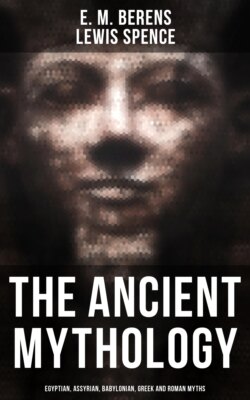Читать книгу The Ancient Mythology: Egyptian, Assyrian, Babylonian, Greek and Roman Myths - Lewis Spence - Страница 32
На сайте Литреса книга снята с продажи.
Rawlinson
ОглавлениеAt this juncture a certain Major Henry Rawlinson, a servant of the East India Company, with a good knowledge of Persian, went to Persia for the purpose of assisting to organize the native army there. He was far away from books, and when he began to copy certain cuneiform texts it was because of deep personal interest. He was quite unaware of the strenuous toil which had been lavished upon them in Europe and worked quite independently of all assistance. The strange thing is that he laboured almost on the same lines as Grotefend had done. He saw almost at once that he had three languages to deal with, and being a man of great natural gifts he soon grouped the signs in a correct manner. Strangely enough he applied the very same names—those of Hystaspes, Darius, and Xerxes—to the texts as Grotefend had done, and found them answer in the same manner. Turning his attention to the inscription of Darius at Behistun, high up in the face of the living wall of rock there, Rawlinson succeeded in copying part of it at great personal risk. In 1838 he forwarded his translation of the first two paragraphs of the Persian text, containing the genealogy of Darius, to the Royal Asiatic Society of London. The feat made a tremendous sensation, and he was supplied with all the principal works on the subject and much correspondence from European scholars. He was, however, patience personified, and would not publish a work he had written on the subject because he thought it better to wait until he had verified his conclusions and perhaps made fresh discoveries. But in 1840 he was despatched to Afghanistan on a political mission and did not return to Bagdad for three years, and it was not until 1846 that he published a series of memoirs in the Journal of the Royal Asiatic Society, in which he gave to the world a translation of the Persian text at Behistun. It was a marvellous achievement, for, unlike those who had been labouring on the subject in Europe, he was ignorant of the languages allied to Persian, yet he had surpassed all other scholars in his results.
But the deciphering of the second and third languages had yet to be attacked. In 1844 Westergaard, working on the lines of Grotefend, attacked the second language. He selected the names of Darius, Hystaspes, and Xerxes, and compared them with their equivalents in the Persian texts. By this means he discovered a number of signs and by their aid attempted to spell out the syllables or words. Judging the writing to be partly alphabetic and partly syllabic, he gave the name Median to the language. Morris, who had Rawlinson's copy of the second transcription of the Behistun text to work upon, deciphered nearly all of it. Shortly after this the language was named Susian. The deciphering of the third of the three languages found at Persepolis was attacked by Löwenstern, and by the Rev. Edward Hinks, an Irish clergyman. This language was Assyrian purely. Hinks was fearful of making blunders, and whilst he was engaged in assuring himself that every step he took was not a false one, Longpérier, published in 1847 a translation of the entire text. He was only able to read it by analogy with the other texts; he could not provide the forms of the Assyrian words themselves. But Rawlinson once more came to the aid of the study, and it was shown that a large number of signs were ideographic. This paved the way for a band of others who by their united efforts succeeded in unravelling the complicated script.
